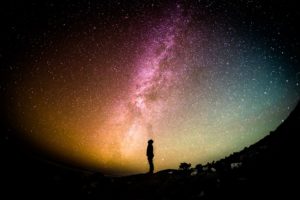MONDAY, 15 FEBRUARY 2016
The waves they have detected – a blip lasting 20 thousandths of a second – originated from two black holes circling around each other and colliding, representing a whole new way we can now observe the universe other than just studying light. Analysing how gravity works is essential in building our knowledge on black holes and the Big Bang
Analysing how gravity works is essential in building our knowledge on black holes and the Big BangFascinated by this and want to find out more about what it all means?
You’ve got a fantastic chance to get to grips with all things gravity. Pierre Binétruy, Director of the Paris Centre for Cosmological Physics at Paris Diderot University, is launching a free online course entitled: Gravity! From the Big Bang to Black Holes. For a period of 6 weeks, you can advance from completely gravity-ignorant to gravity-expert! Incredibly, the course does not require any background knowledge in physics or maths (phew!), and even includes a lecture by the Nobel Prize laureate George Smoot.
The course starts on the 9th May 2016. Have a look at further information and sign up here.
